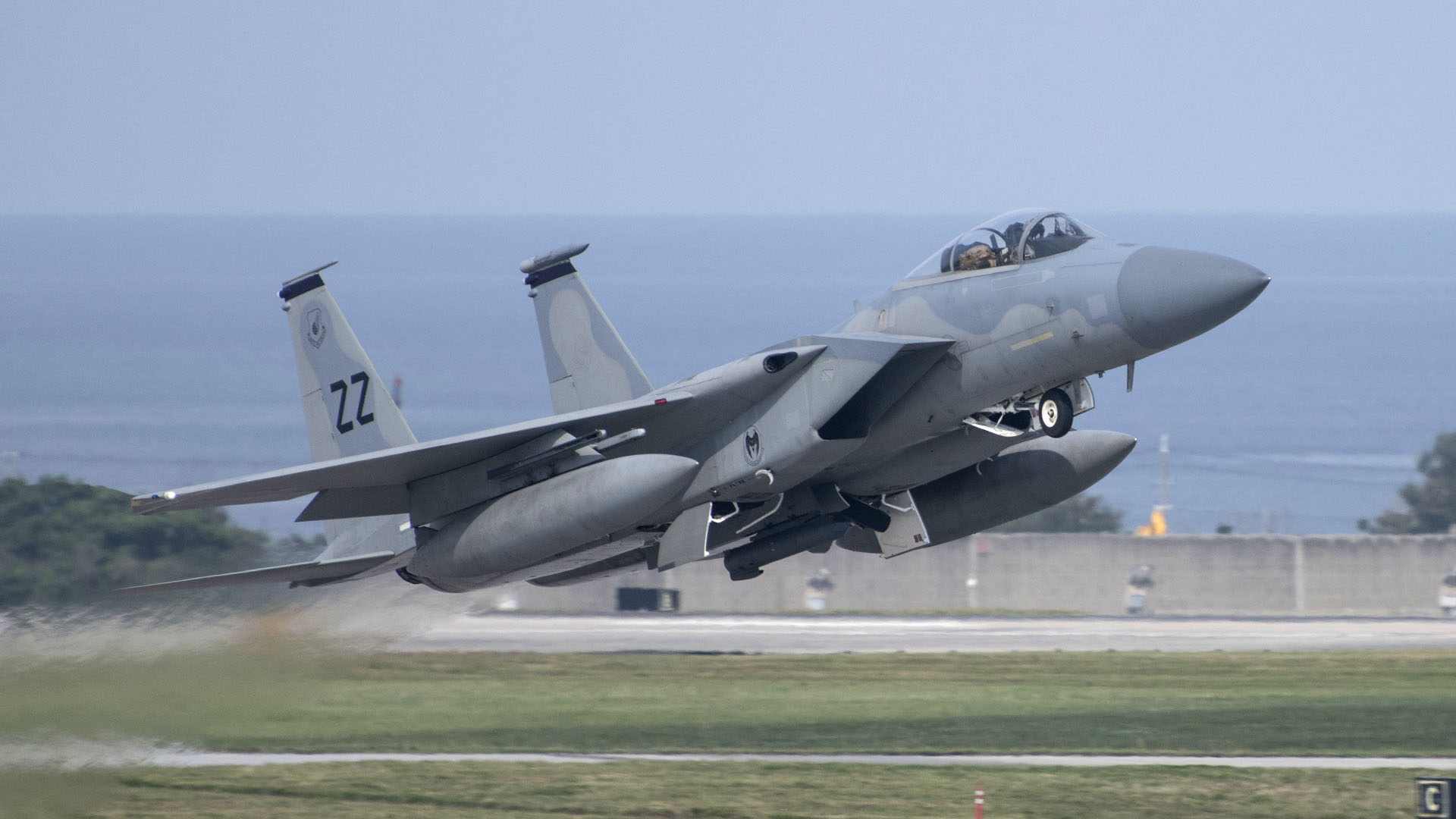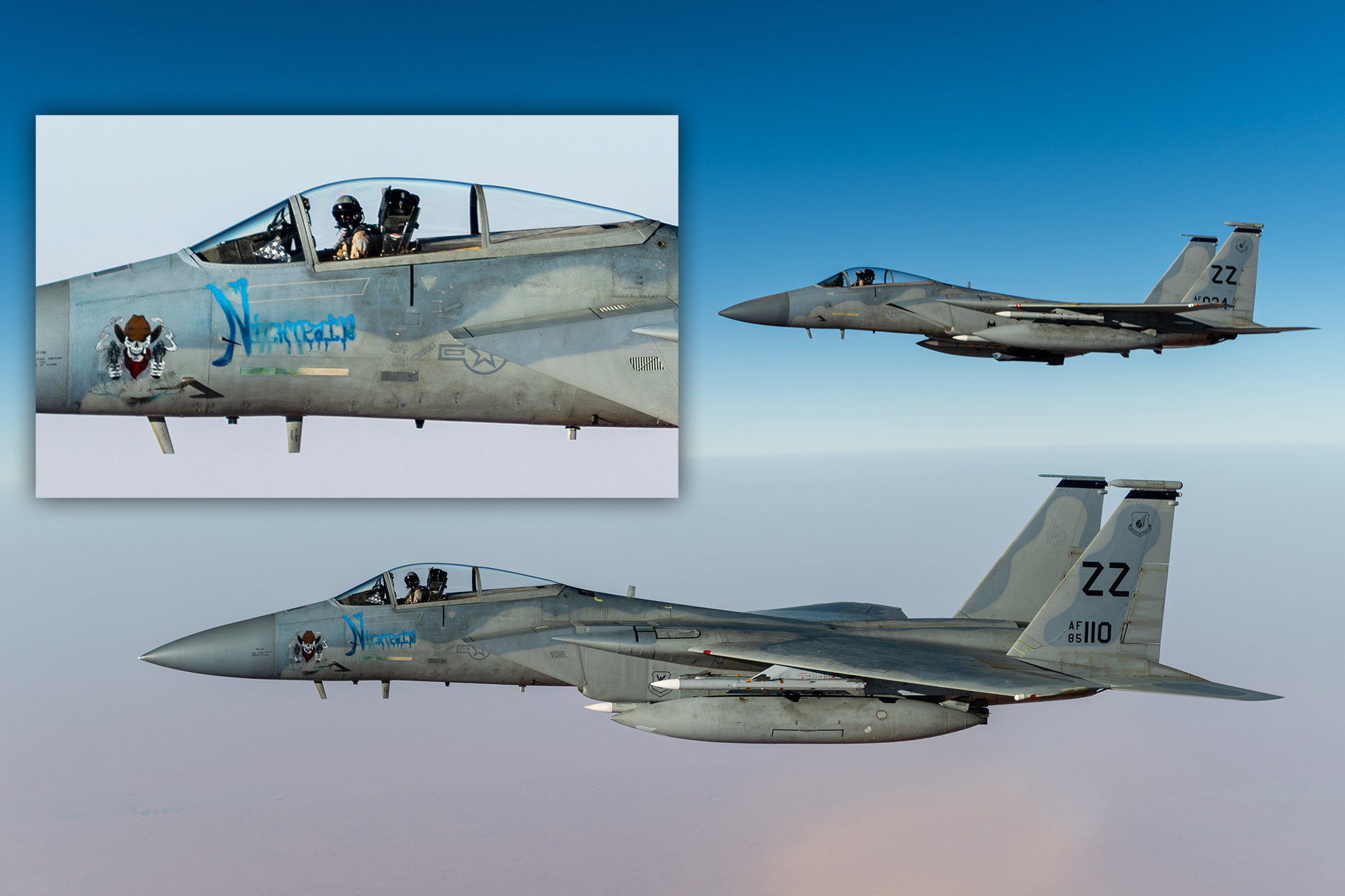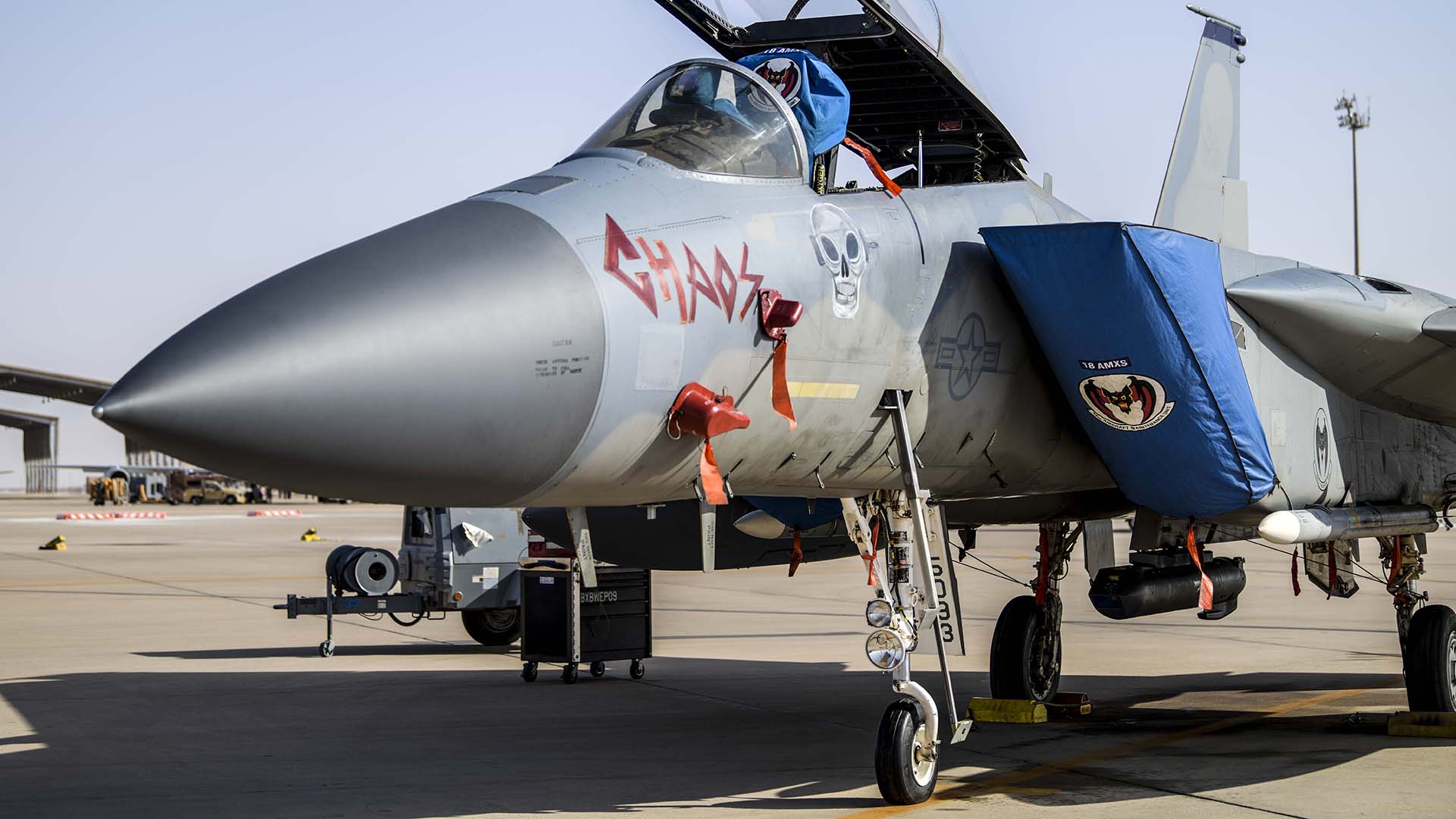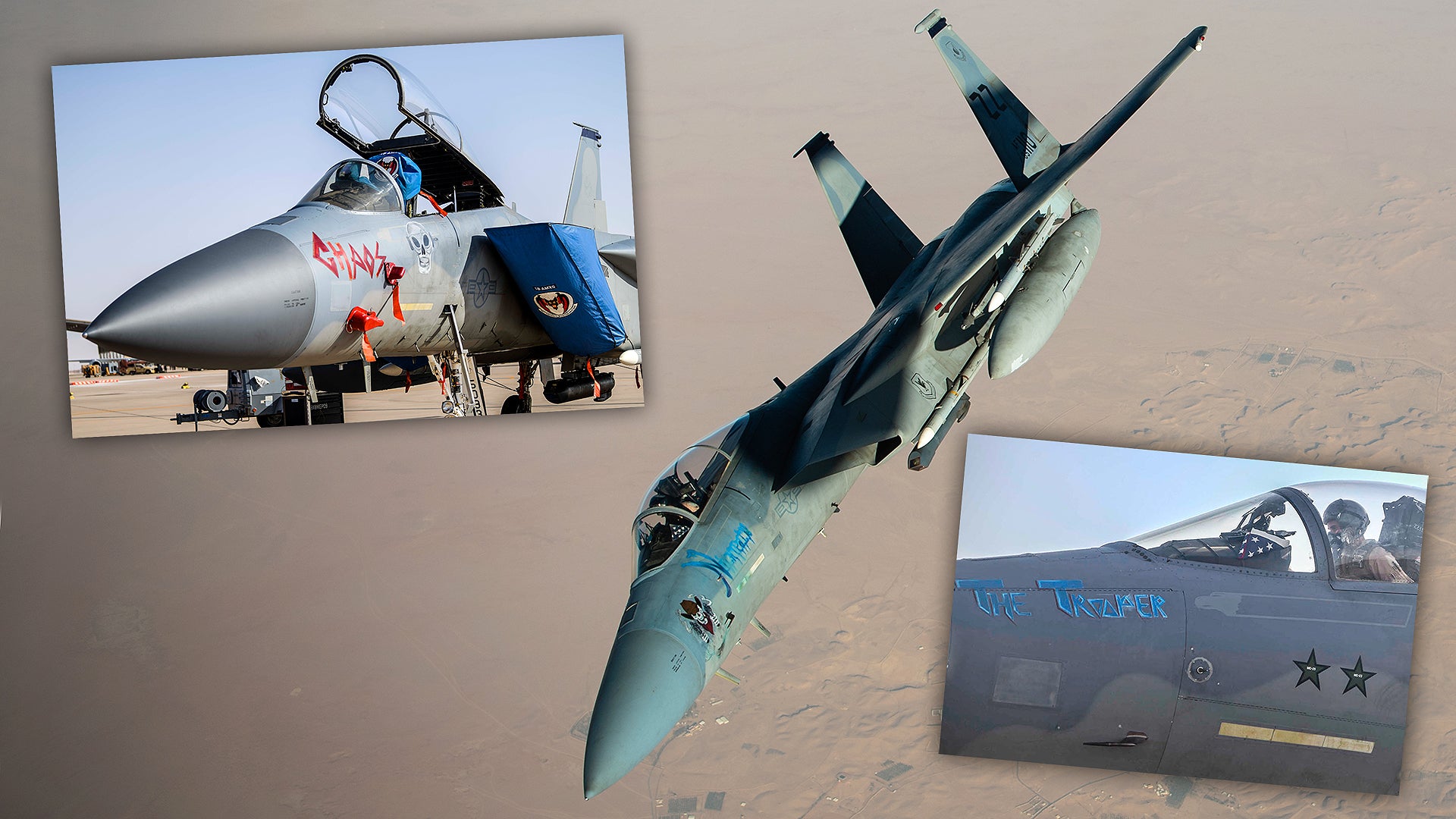The U.S. Air Force’s 44th Fighter Squadron, the “Vampires,” is currently deployed to Prince Sultan Air Base, Saudi Arabia, as part of Operation Inherent Resolve. Since arriving in theater, the squadron’s maintainers have applied bold and remarkably large nose art to a number of the jets.
Recent imagery clearly shows the artwork and reveals the aircraft are flying combat missions fully loaded with live AIM-120 Advanced Medium-Range Air-to-Air Missiles (AMRAAMs), AIM-9X Sidewinders, plus a Lockheed Martin’s AN/AAQ-33 Sniper Advanced Targeting Pod (ATP) on the aircraft’s centerline station.
The unit’s F-15Cs departed their home station at Kadena Air Base, Japan, on April 28, 2020, headed so Saudi Arabia to join U.S. Central Command’s (CENTCOM’s) 378th Expeditionary Operations Group (EOG). Once on deployment, technically the unit’s designation turned into the 44th Expeditionary Fighter Squadron (EFS).

Lt Col Ryan Corrigan, the 44th EFS commander stated the following about the unit’s mission to the Middle East:
“We are honored to join the Prince Sultan Air Base team and partner with the Royal Saudi Air Force… We look forward to strengthening the coalition as we continue to provide stability to the region.”
“The F-15C brings an important capability to the AOR, enabling the coalition to maintain air superiority against any threat we may face. It’s an extremely capable fighter,” added Col Robert Raymond, the 378th Expeditionary Operations Group commander.

USAF F-15C Eagle and F-15E Strike Eagle squadrons are leading the way when it comes to nose art. The practice was outlawed in the early 1970s when General John Ryan was the USAF commander. Following a directive issued in 2015, this kind of stunning artwork is being applied to fighters on deployment with increasing frequency. However, the delicate properties of low observable (LO) coatings mean that 5th generation fighters are never likely to receive such decoration.

Adding nose art and special paint schemes to certain aircraft is part of a USAF initiative to revive old traditions and foster squadron culture. However, the handiwork must conform to strict Air Force guidelines. According to a report by Military.com, the nose art must be “distinctive, symbolic, gender-neutral, intended to enhance unit pride, designed in good taste” and abide by copyright and trademark laws.
Typically, maintainers use grease pencils to apply the creative themed artwork, which has the additional benefit of being easily washed-off by corrosion control teams when the aircraft return from deployment.

The “Vampires” deployment to PSAB has given rise to some of the largest nose art seen on modern fighters for a very long time. This has been characterized by huge stenciling for a number of the aircraft, including those dubbed “CHAOS”, “NIGHTRAIN”, and “THE TROOPER.” The latter is applied to double MiG-killer 85-0114, which claimed a MiG-23 and a MiG-29 during Operation Desert Storm when it was assigned to the 58th Tactical Fighter Squadron from Eglin AFB, Florida.

Next year will mark the 30th anniversary of Desert Storm and the very same F-15Cs are back in Saudi Arabia, standing guard over the region. This time around, they are sporting far more modern weaponry and sensors, and some big, brash, and colorful nose art.
Contact the author: Jamie@thedrive.com
